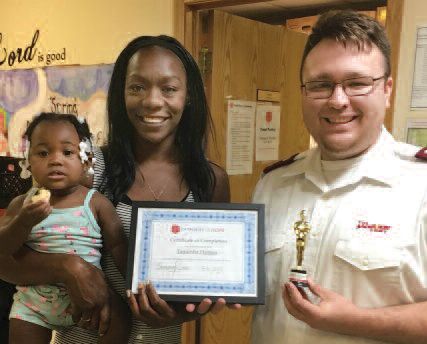 by Michael B. Swanson
by Michael B. Swanson
The Heartland Division. Amber fields of corn and soybeans meet postindustrial America. Ribbons of highway lead from impoverished “south sides” with gentrified poor to struggling communities that have been waiting a generation for the factory to come back. Heartland is where The Salvation Army has found a home and built community just above the waterline. Here battles are hard fought, but hope is as real as the trouble.
There has always been something about the Heartland Division that’s gritty. It’s a place where “rag tag” is worn as a badge of honor. Nothing is wasted, and at times we may go without. It is the perfect backdrop to the Pathway of Hope (POH) approach.
In the Heartland Division, POH functions as a guiding philosophy, a vehicle for relationship, a missional investment, a measurable effort and an integrated approach. It fits anywhere, is accessible to anyone, complements other programs and functions kind of like a language. It helps us get kids to camp and turns a Wednesday afternoon into a “Sunday morning.”
When POH came to the Heartland Division in 2012, leadership had the foresight to develop a path without off ramps. The invitation to embrace POH was so complete that “opting out” would not be an option. Recognizing each appointment was sure to have its own unique constellation of challenges, initial efforts were focused on relationship and partnership building at the hyper local level. Just as we aimed to tell every person coming through our front doors, “you are enough,” we wanted that message to land in the heart of every officer and case worker in the division.
This grassroots approach was amplified when combined with unwavering support from the divisional team. There has been a wholesale adoption of the term “social ministry” (as opposed to social service) as an internal benchmark. If The Salvation Army cannot aim to provide services through a ministry mindset, perhaps the service would be better provided by other community partners. This cultural embrace was typified through the leadership of Colonel Evie Diaz and now Major Kelly Collins.
The championship of this approach always has depended on well-resourced and supported regional coordinators. They are charged to support the entirety of a corps’ ministry and to work toward the full integration of POH.
Simply put, we have found when POH is who we are more than what we do, amazing things can happen.


